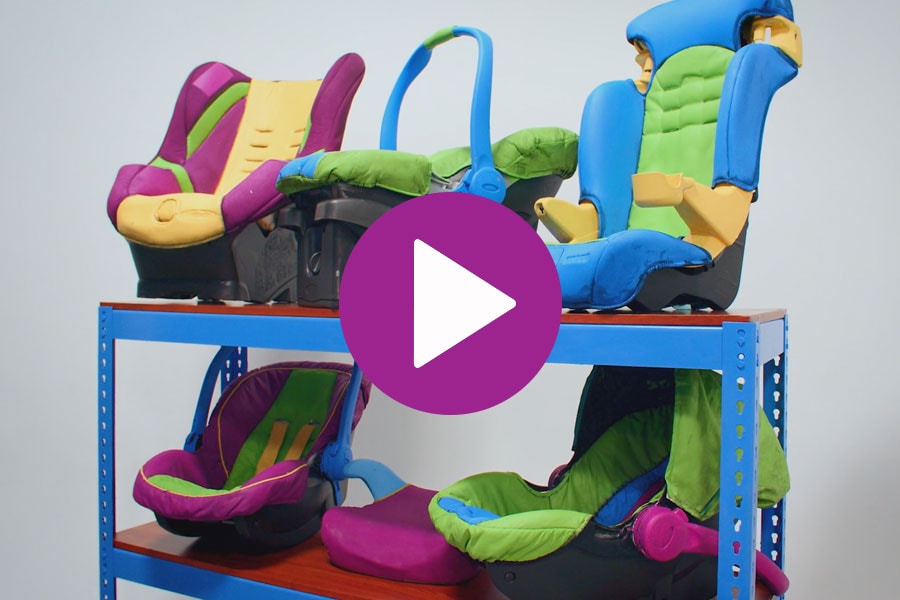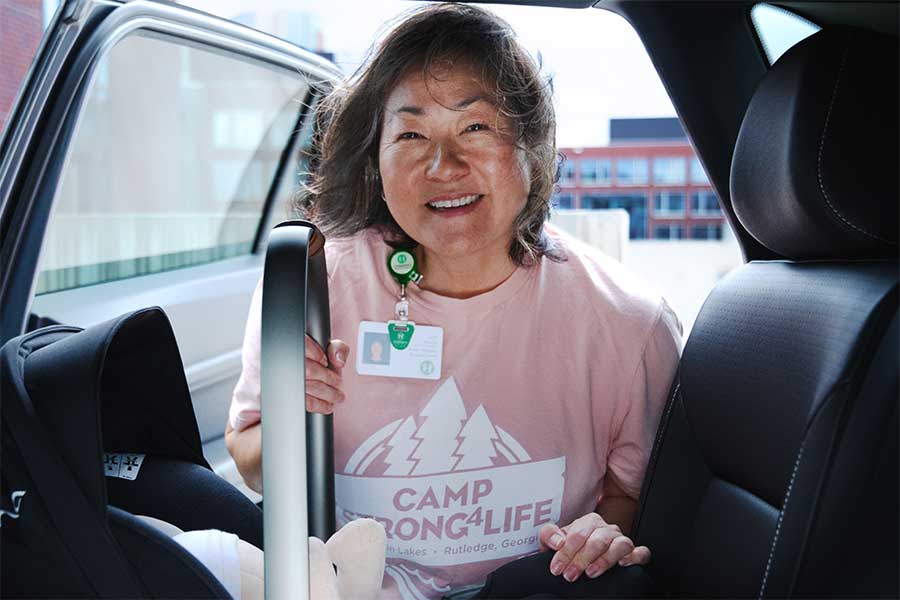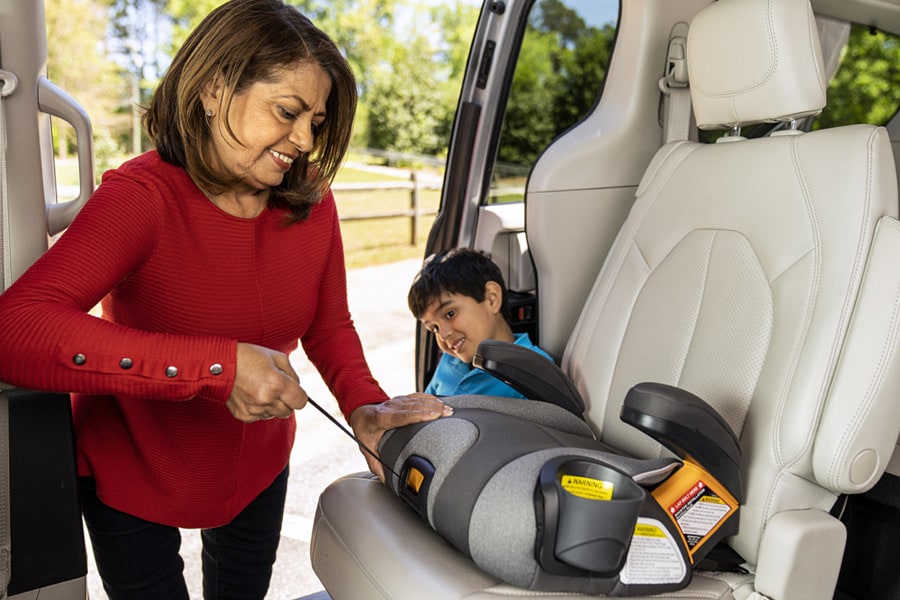FAQ: General Car Seat Safety
It’s normal to feel overwhelmed when it comes to choosing or installing a car seat. After all, there’s a lot of information out there, and the stakes are high. But taking the time to learn about proper installation and use is an investment you’ll never regret. Read on for expert answers to the most commonly asked car safety questions from our team of emergency department physicians, nurses and certified child passenger safety technicians (CPSTs).
In this article:
Why are car seats important?
Car seats are designed to keep a child as safe as possible in a vehicle. Proper car seats offer a range of safety benefits, such as helping protect a child’s head, neck and spine in case of a sudden stop, swerve or crash. They also help absorb and spread the shock of a crash.
Where can I find state laws about passenger safety?
Every U.S. state has a child passenger safety law, but laws vary by state and often only cover the minimum protection.
In Georgia, children must be in a car seat or booster seat appropriate for their height and weight until they are 8 years old. Visit Safe Kids Worldwide to view laws by state.
How do I know if a car seat meets safety standards?
By federal law, all car seats made by U.S. manufacturers must be crash tested and meet National Highway Traffic Safety Administration (NHTSA) standards.
However, be cautious if you’re shopping for car seats online. Some online retailers are not regulated. Some sell counterfeit car seats that are not safe. Authentic, federally-compliant car seats will feature many safety labels, including a warning label with a yellow header that states, “This child restraint system conforms to all applicable Federal Motor Vehicle Safety Standards (FMVSS).”
While shopping for a car seat, always keep your child’s height and weight in mind. And know that if a car seat is damaged or expired, it is no longer safe. If a car seat is involved in a crash, depending on the severity of the accident, you likely need to replace the car seat.
Where can I go to have my child’s car seat checked for safety?
We highly recommend having your car seat inspected by a certified child passenger safety technician (CPST). According to the NHTSA, nearly half of car seats in the U.S. are not installed properly. Visit Safe Kids Georgia to find a CPST in Georgia. If you’re located outside Georgia, check out the Safe Kids Worldwide national directory.
Are more expensive car seats safer?
Some seats offer more convenience features, making them more expensive but not necessarily any better or safer.
The best seat for you and your child is the one that:
- Fits your child.
- Fits in your car.
- Is not expired.
- Is not damaged.
- Meets NHTSA standards.
- You can properly install.
- You will use correctly for every trip.
Do car seats expire?
Car seats expire for a variety of reasons: wear and tear, changing laws and regulations, recalls, and limits on manufacturer testing. Seats typically expire within 6 to 10 years of the manufacture date. Look for the manufacturer’s sticker on your child’s seat with the make, model and manufacture date, and consider taking a picture to keep the date handy.
Where can I find recall information?
Search the NHSTA website for manufacturer recalls. We also recommend registering your seat with the manufacturer. That way, you should receive information about product recalls without searching for it. Most of the information you will need to register your seat is listed on the manufacturer sticker.
Which is better: LATCH or seat belt installation?
When it comes to installing your car seat using either the vehicle’s LATCH (lower anchors and tethers for children) system or seat belt, both methods are generally safe. The “better” choice depends on the vehicle, the car seat and your child’s size.
Are used car seats OK to use?
It’s typically OK to use a used car seat if:
- You know the manufacture date.
- You know there were no recalls on the car seat.
- You know the car seat was never involved in a crash that requires replacing the seat.
- There is no physical damage to the car seat.
We recommend only using a used car seat if you personally know, and trust, the previous owner. Therefore, we do not recommend using third-party selling platforms, such as Facebook Marketplace or Craigslist.
Do car seats need to be replaced after a car crash? Why else would I need to change or replace my child's car seat?
Always replace your car seat after a crash if:
- There is physical damage to the car seat.
- Your airbags deployed.
- Your car is not in good driving condition.
- The vehicle door closest to the car seat was damaged.
- Someone needed medical attention.
In case of a minor crash (where none of the above is true), contact your car seat’s manufacturer for guidance.
If I haven't been in a car crash, why should I change or replace my child's car seat?
In addition to damage (from a crash or mishandling), expirations and recalls are two important reasons you should consider replacing your child’s seat. After a recall, the manufacturer may replace recalled items for free. Check with your car seat’s manufacturer before you replace your seat.
If I need to replace my car seat, how do I get rid of the old one?
You can place your expired, damaged or recalled car seat at the curb with trash pick-up (or in a dumpster). Please cut the harness straps so others are not tempted to use the unsafe car seat.
Can I move seats around from vehicle to vehicle?
Yes. Whether your child is riding with your spouse, partner, a grandparent or a friend, a car seat should always go with them. However, be aware that each move comes with the risk of installing the seat incorrectly. That’s why it’s crucial that you or other care providers ensure a safe installation—and fastening—for every ride.
How do I travel with my car seat?
Whether you’re traveling by plane or train, many transportation companies allow you to check children’s items, such as car seats, booster seats and strollers for free. If you want to use your car seat in the cabin of a plane, you will most likely need to purchase a ticket for the seat. Check your carrier’s policies for special items in the cabin and in checked baggage. You will also need to ensure your child’s car seat is FAA-approved. You can find that information in the car seat’s manual.
Is it OK to use car seat rentals for travel?
We do not recommend using car seat rentals while traveling. Just like buying a used car seat from a stranger, you never know that seat’s history. It’s best to use your child’s own car seat so you know it’s not expired, damaged or recalled.
If your child has an injury or is showing signs of illness, call your doctor or visit an urgent care center. If your child has a life-threatening injury or illness, is having trouble breathing or is unconscious, call 911 and/or visit an emergency department immediately.









